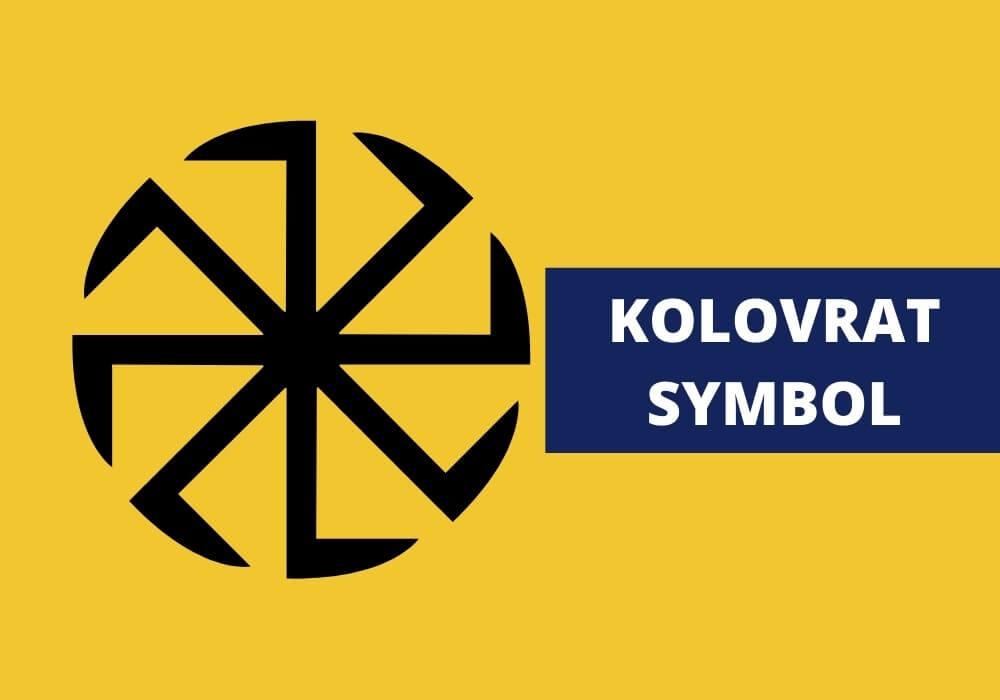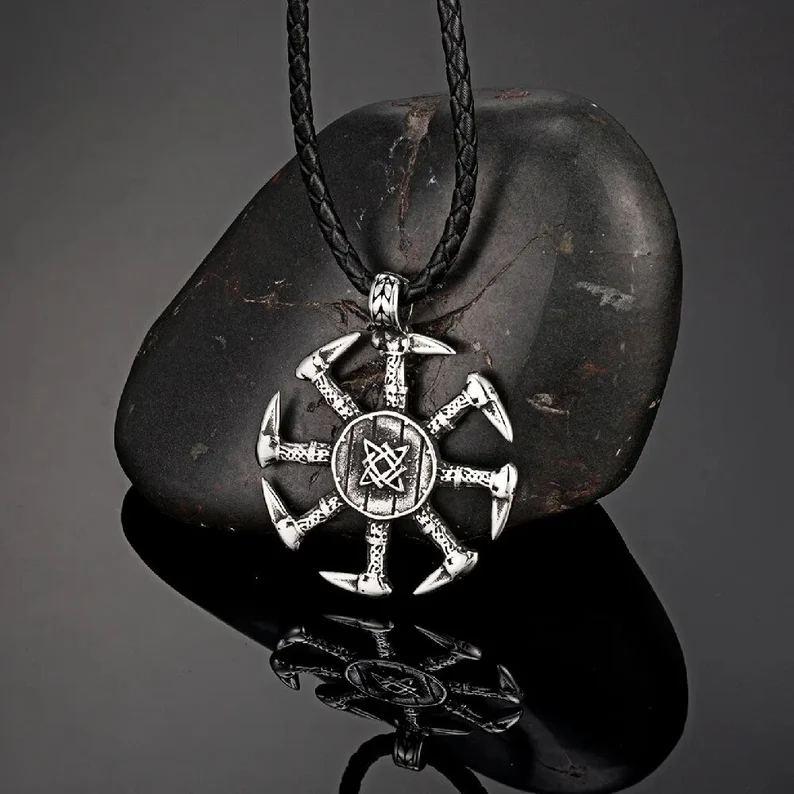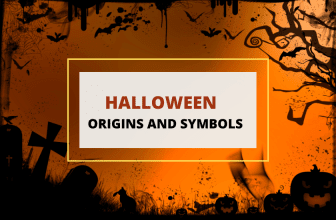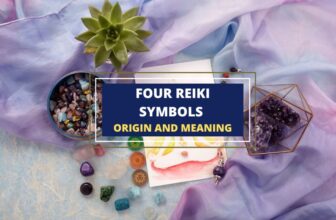
Table of Contents
The kolovrat is an ancient symbol that was initially used to symbolize positive concepts. However, as with most symbols, over time it’s acquired some negativity because it’s viewed as a variation of the swastika. What is the history of this symbol and what does it truly represent? Let’s have a look at the Kolovrat and what it symbolises.
Origins of the Kolovrat Symbol
The kolovrat is an ancient symbol. While the symbol itself is ancient, the name kolovrat is more recent, appearing in the 20th century.

So, if the term “kolovrat” only appeared within the 1900s, what was it originally known as? That’s a great unknown and the best substitute would be the Swastika, of which there are many varieties.
The swastika was an ancient and highly revered symbol until it was tainted by Nazism. However, it continues to be a respected symbol in many Eastern cultures.
The kolovrat appears to be a version of the swastika, featuring eight bent arms facing an anti-clockwise direction. Unfortunately, it too was adopted by the more extremist subculture as an emblem for their beliefs. The Nazi black sun symbol appears to be based on the kolovrat but features 12 radial sig runes instead of 8. The swastika typically has 4 arms or spokes, whereas the kolovrat traditionally has 8.
What Does the Kolovrat Symbolise?
To the Slavic people, the kolovrat was seen to have great importance where it was considered a representation of the Sun and is seen inscribed on some early Slavic graves as an indication of eternal life. Though the kolovrat seems to be of Slavic origin, it spread into different cultures and different eras in which it seemed to undergo a transformation, not only in image but in symbolism.
- Battle between good and evil – Traditionally it was seen to indicate the endless cycle of fighting between the Slavic gods – Perun and Veles. Peun is the head of the Slavic pantheon of gods and is represented by fire, thunder and lightning whereas Veles is the god of the underworld as well as water and the earth. Veles is said to always be sneaking into the dryness and warmth of Perun’s world and steal cows as well as close family members from Perun. As a result, Perun is constantly chasing after Veles. Thus, the conflict between both is never-ending and cyclical. A battle between light and dark, good and evil.
- Cycle of life – Another interpretation of the kolovrat is as the endless cycle of life. Just as the sun rises and sets, providing life in an eternal circling around Earth, so is life cyclical with endless birth, death and rebirth.
- Truth – The kolovrat has also been seen to represent truth and lies. As one steps out of the obscurity of lies then one’s eyes are opened to the light and illumination of the truth.
- Power – Additionally, from looking at the origination if the term “kolovrat” which is said to be a compounding of kolo (wheel) and vrat (spokes) it is suggested that the symbol stands for worldly as well as spiritual power.
- Reincarnation – If we consider that the kolovrat is a swastika, we can then find a representation within the Eastern religions, specifically Hinduism and more often in Buddhism, where it is seen as the Wheel of Life. In Eastern Religions, if we see the swastika as a stripped-down version of the kolovrat, we find that it represents the cycle of life and reincarnation as well as an omen symbol of good luck.
- Cross – Within Christianity, the kolovrat can represent the cross and therefore Jesus conquering death.
Do the Number of Kolovrat Spokes Mean Anything?
When you look at the different icons of the kolovrat you will see a variation in the way it is portrayed.
The four-spoke version has become the more recognisable of the different images due to its rise in popularity in the 20th century, especially amongst right-wing groups.
However, the eight-spoke kolovrat has become an icon of identity within certain Slavic groups, with a variety of interpretations such as:
- A symbol of the sun
- a means to connect to the past Slavic ancestors
- a reflection of a sensible man
- a reflection of the cycle of life
It is also believed that the eight-spoked kolovrat contains twice as much power as the four-spoked version.
The Kolovrat in Fashion and Jewelry
The kolovrat is sometimes used in jewelry designs and portrayed on decorative items, such as carpets, wall hangings and artwork. It’s also sometimes chosen as a design on clothing.
There are as many reasons for wearing the kolovrat as there are interpretations of its meaning. For some, it’s a reminder of the cycle of life. For others, it can indicate the warmth of the Sun and its life-giving rays. Others wear the kolovrat as a means of divine protection and strength as the fight in battle (both physical and spiritual). For those wanting good fortune, having the kolovrat as a piece of jewelry may help them feel like they will now turn their fortunes around. Below is a list of the editor’s top picks featuring the kolovrat symbol.
There are many stylistic variations to the kolovrat. For example, the spokes are sometimes depicted as arms holding knives or blades, turning left or right or patterned as a flower or star.
In Brief
The kolovrat has a long history and despite some controversy, it continues to be a well-loved symbol, especially in Eastern Europe. Originally seen as a symbol of the sun and the life that it gives through its warmth and light, the kolovrat has evolved through the years to represent both negative and positive concepts. The Slavic people still see it as an emblem of their cultural heritage.











